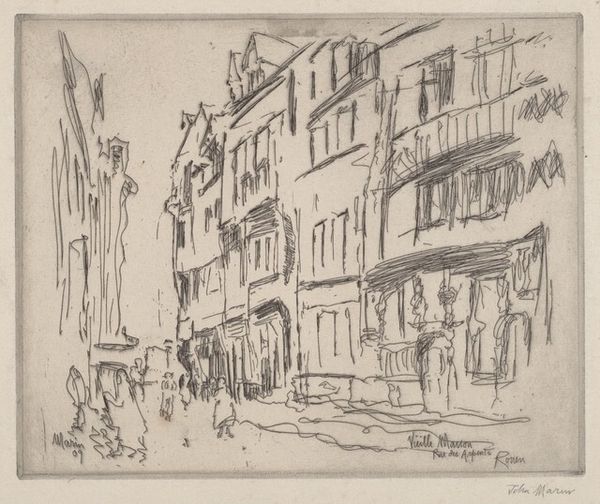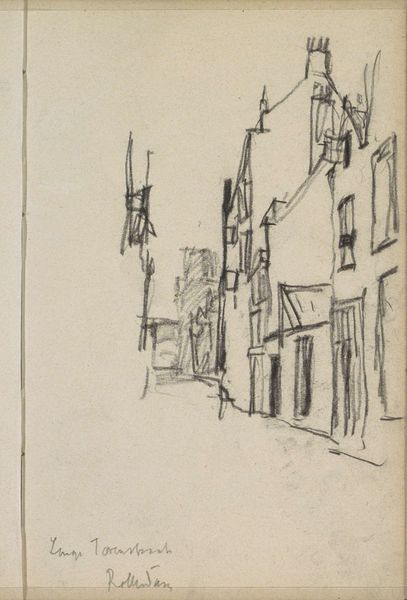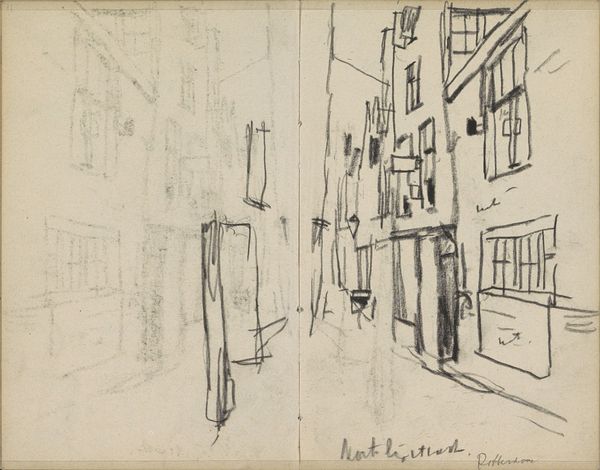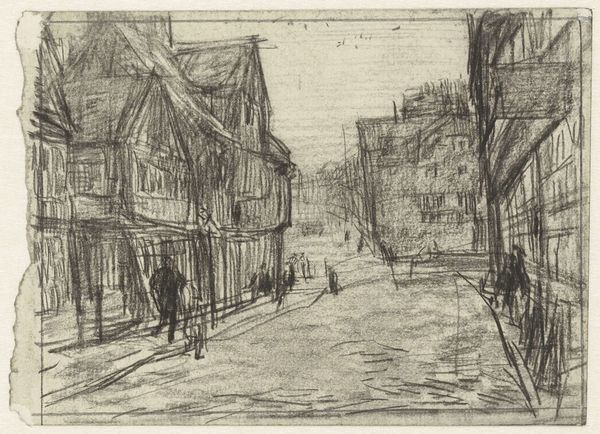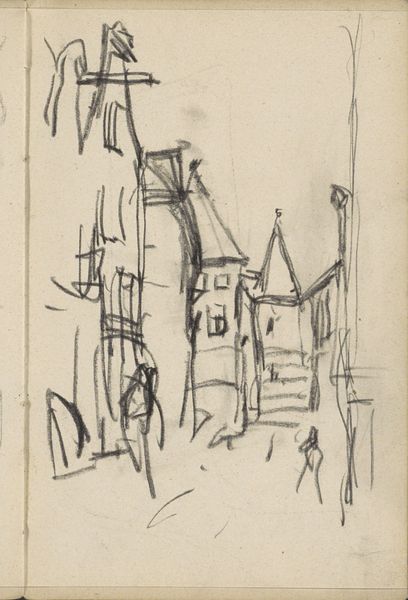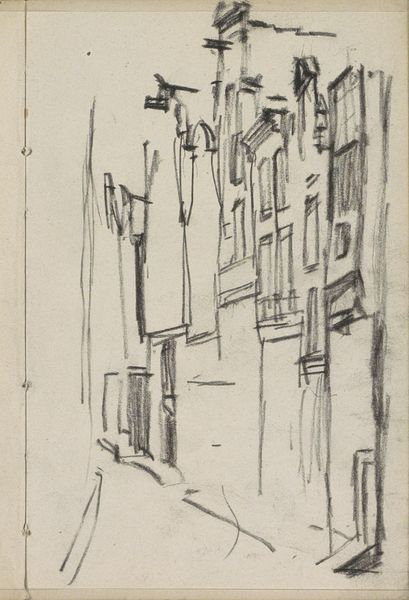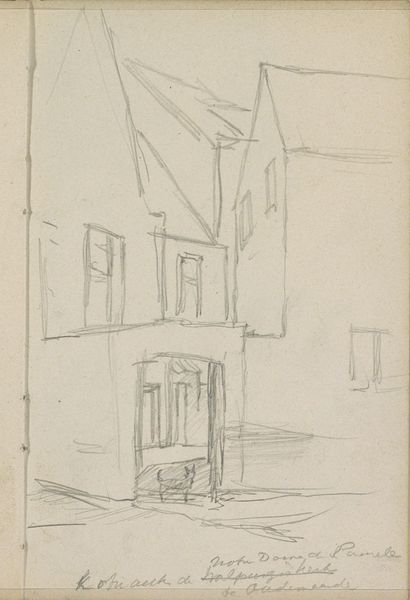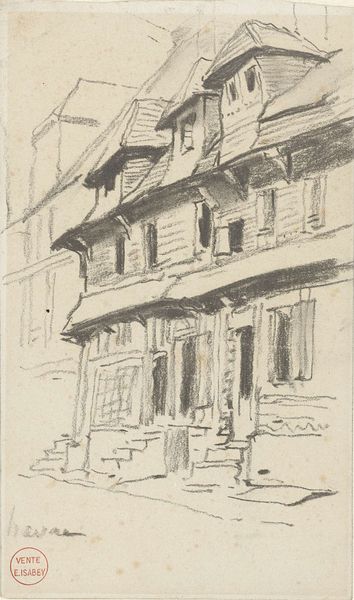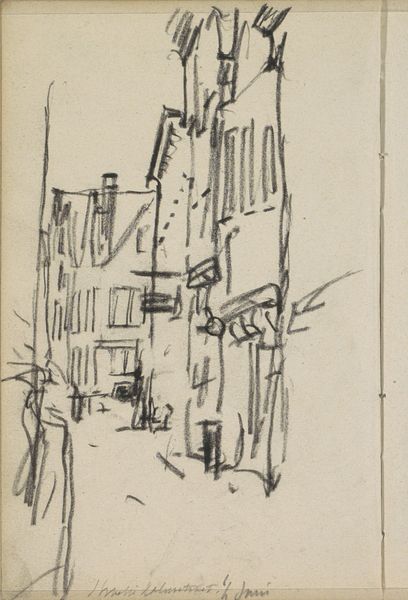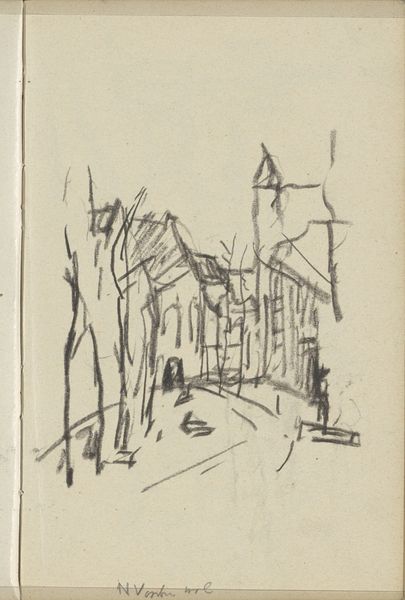
Gezicht op de Hazenstraat te Amsterdam, ter hoogte van de Lauriergracht 1886 - 1903
0:00
0:00
georgehendrikbreitner
Rijksmuseum
Copyright: Rijks Museum: Open Domain
Curator: This is George Hendrik Breitner's drawing, "Gezicht op de Hazenstraat te Amsterdam, ter hoogte van de Lauriergracht," made with pencil and graphite sometime between 1886 and 1903. Editor: My initial reaction is a sense of subdued melancholy. The sketchiness, the monochromatic palette… it feels like a fleeting moment captured in time, almost like a ghost of Amsterdam. Curator: Breitner was, after all, very much a painter of the everyday, of the urban experience. The Rijksmuseum’s notes emphasize his interest in capturing the rapid changes in Amsterdam, shaped by modernization. This sketch highlights the urban development that was underway. Editor: Absolutely. Note how the lines, though quickly drawn, create a very structured composition. See how the verticals of the buildings are mirrored in the figure of a solitary man. And how the horizontal shadows lend stability and visual anchor to the scene. It's not merely a fleeting impression; there is also intent. Curator: Indeed. It's a reflection of the period's socio-economic developments too. Breitner captured Amsterdam on the brink, a city modernizing and simultaneously clinging to its past. We also see how artistic approaches such as "plein-air" gave freedom for artists to break from studio constraints. Editor: Speaking of, look at the contrast between the buildings. They seem both solid and ephemeral. Perhaps he intentionally played with opacity and linear qualities. What about how the empty space creates rhythm and reinforces this duality? Curator: I see the significance of the urban fabric in visualizing late 19th-century life. The rise of cityscapes reflects broader cultural shifts towards valuing the urban experience. The image has historical significance, displaying elements from a transforming city. Editor: A fantastic dialogue. It is about more than just documentation; it represents Breitner's formal response to Amsterdam and is mediated by the era. Curator: A testament to how a simple drawing can unpack the multiple facets of historical context!
Comments
No comments
Be the first to comment and join the conversation on the ultimate creative platform.
